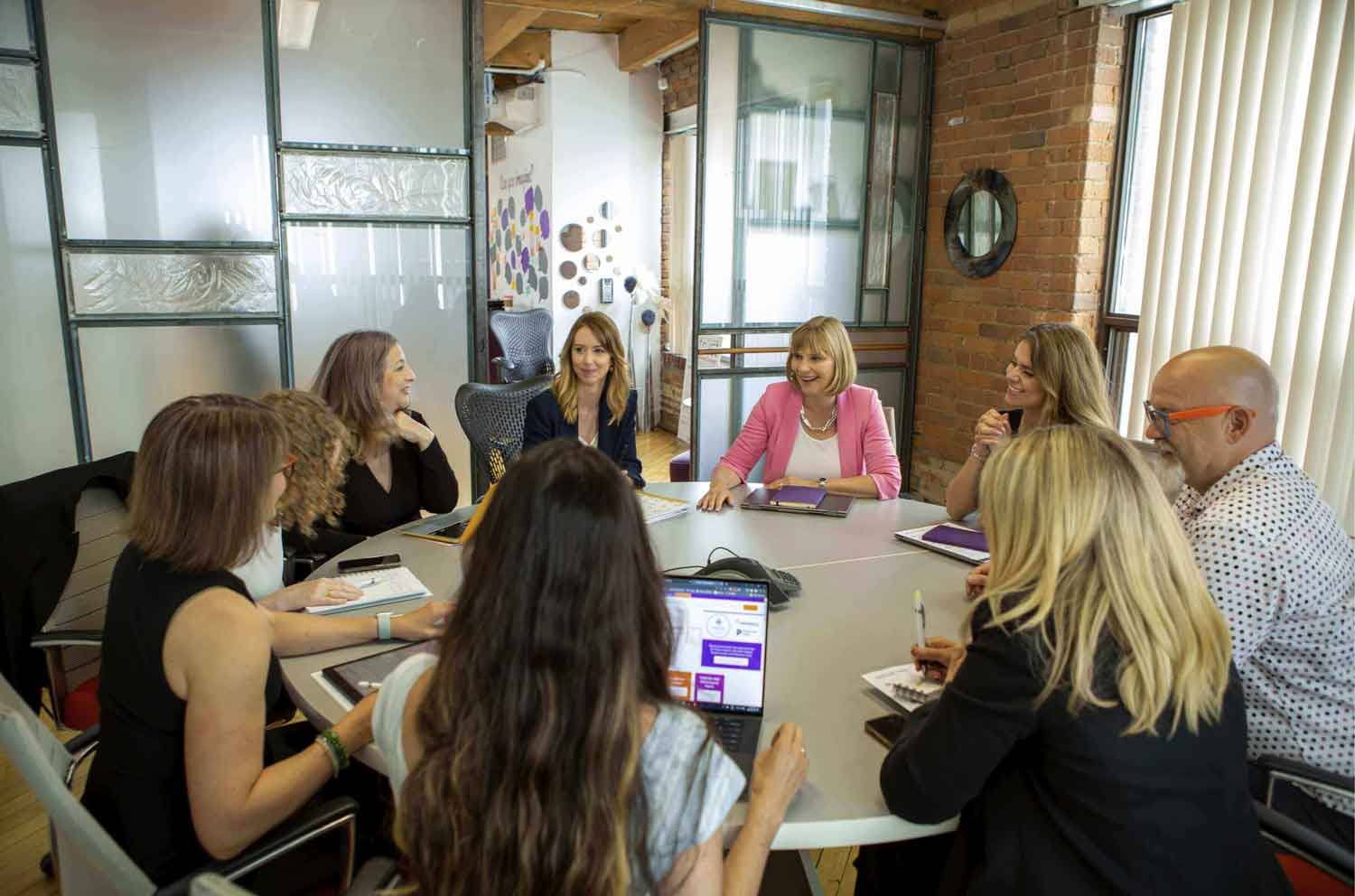We know that diversity in leadership drives business results. Research has shown that company profits and share performance can be close to 50% higher when women and ethnic diversity are well-represented. And, a recent (and absolutely fascinating) study did a deep dive into the whys behind higher profitability when more women are at the table. It turns out that “adding women to the C-suite does not simply bring new perspectives to the top management team (TMT) — it shifts how the TMT thinks.”
Having women in a senior management position results in a cognitive shift that propels companies to be more open to change, and to invest more in collaborative knowledge building. McKinsey’s 2020 Women in the Workplace report noted that women are more likely than senior-level men to embrace employee-friendly policies and programs and to champion racial and gender diversity: more than 50% of senior-level women say they consistently take a public stand for gender and racial equity at work, compared with about 40% of senior-level men.
There’s Still Work to be Done
Times are changing. More and more, women are moving into to the top spot at Fortune 500 companies to take over from male predecessors. During the first quarter of 2021, 41 women are at the helm of Fortune 500 companies.
While that’s a vast improvement over previous years, it still means that just 8.2% of CEOs are women. Female contenders for senior management and C-suite positions continue to represent a relatively under-utilized pool of talent. This lack of diversity is puzzling, especially when the business case is there.
And, the pandemic isn’t making it easier for building a stronger bench of gender and ethnically diverse leaders. Many women have taken on the brunt of homeschooling and other “invisible labour” tasks. The Women in the Workplace report, which was conducted in partnership with LeanIn.org, finds that women are “1.5 times more likely than senior-level men to think about downshifting their role or leaving the workforce because of COVID-19. Almost three in four cite burnout as a main reason.”
Discrimination and bias takes many forms, and forward-thinking organizations are investing strongly in diversity and inclusion programs. In theory, it sounds great. However, women are still outliers. Senior-level women are also nearly twice as likely as women overall to be “Onlys”—the only or one of the only women in the room at work.
How to Create Opportunities
A diversity and inclusion strategy is a much-needed first step. But to be shift from theory to practice, it’s critical to amplify the understanding around unconscious bias. Organizations must intentionally cultivate sponsorship for marginalized groups of leaders.
Overlooked, marginalized talent face huge hurdles when climbing the corporate ladder: challenges in accessing informal networks, unconscious bias, lack of visibility and opportunity. One-to-one mentoring, or one-off events are not enough to take your diversity initiatives over the finish line.
A group mentoring approach helps your diverse talent build the strategic networks they need and facilitates the executive sponsorship crucial for advancement. Giving senior leaders the chance to see high-potential leaders in action will expand their views of talent and potential and shift senior leaders from mentors to advocates.
Add some sustainability to your diversity initiatives. Talk to us about how a group mentoring program can take you from education to action. Book your complimentary coaching call.




